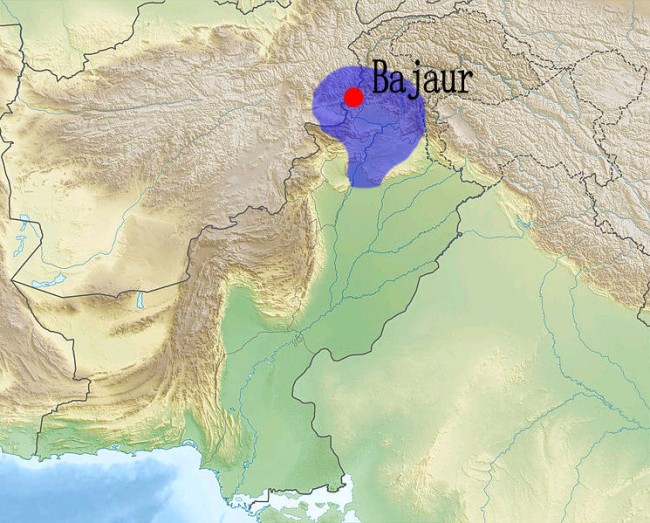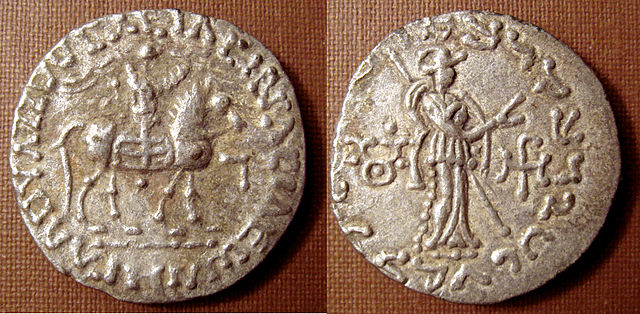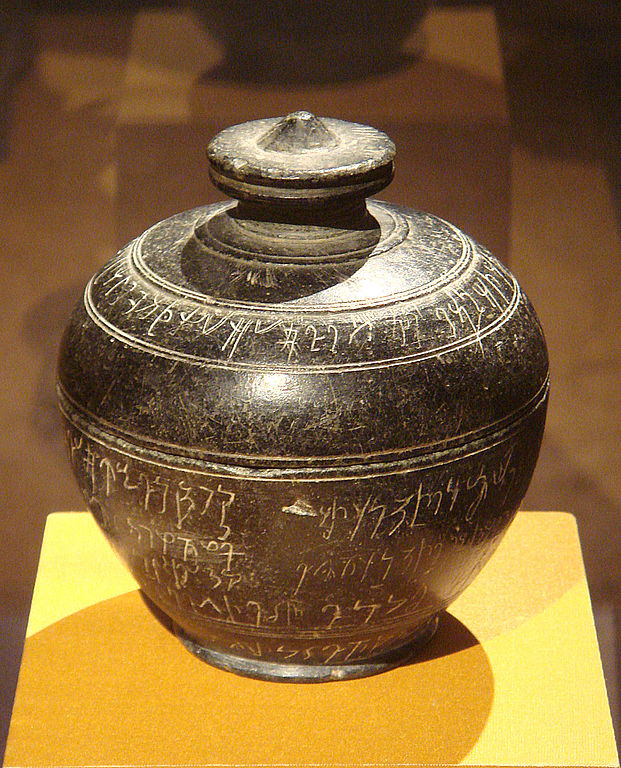
| APRACHARAJAS
Approximate location of the Apracharajas Capital
: Bajaur
Silver coin of the Apracaraja Vijayamitra in the name of Azes II. Buddhist triratna symbol in the left field on the reverse The Apracharajas (also known as Apracarajas, Apraca, Avacas) were an Indo-Scythian ruling dynasty of western Pakistan. The Apracharaja capital, known as Apracapura (also Avacapura), was located in the Bajaur district of the Khyber-Pakhtunkhwa, Pakistan. Apraca rule of Bajaur existed from the 1st century BCE to the 1st century CE. Its rulers formed the dynasty which is referred to as the Apracharajas.
Origins
:
The
Indo-Scythians of the Apracharajas dynasty were successors of the
Indo-Scythian king Azes. It seems that they established their dynasty
from around 12 BCE. Their territory seems to have centered in Bajaur
and extended to Swat, Gandhar, Taxila, and parts of eastern Afghanistan.
The Bajaur casket was a Buddhist dedication made by Apraca king Indravarman. Metropolitan Museum of Art The Apracharajas embraced Buddhism: they are known for their numerous Buddhist dedications on reliquaries. On their coins Hellenic designs, derived from the coinage of the Indo-Greeks, continued to appear alongside Buddhist ones.
•
Vijayamitra (ruled
12 BCE - 15 CE) personally dedicated in his name a Buddhist reliquary,
the Shinkot casket. Some of his coins bear the Buddhist triratna
symbol.
"Members of the Apraca family in the northwestern borderlands of Pakistan and Afghanistan made numerous Buddhist donations recorded in Kharosthi inscriptions dated in the era of Azes. Although most of these inscriptions lack specific provenance, the domain of the Aparacas was probably centered in Bajaur and extended to Swat, Gandhar, Taxila, and parts of eastern Afghanistan in the last half of the first century BCE and the early decades of the first century CE. Since the discovery of an inscribed reliquary casket from Shinkot in Bajaur donated by the Apraca king Vijayamitra (who evidently founded the dynasty), other inscriptions record donations of relics by at least four generations of kings, queens, and court officials. Apraca kings known from Kharosthi inscriptions, coins, and seals included Indravasu, Visnhuvarman (perhaps identical to Vispavarman), and Indravarman, but the dynastic genealogy remains uncertain."
—
Neelis, Jason, Early Buddhist Transmission and Trade Networks: Mobility
and Exchange.
"In the twenty-seventh year in the reign of Lord Viyeemitro, the King of the Apraca; in the seventy-third year which is called the era of Azo, in the two hundred and first - 201 - year of the Yonas (Greeks), on the eighth day of the month of Sravana; on this day was established [this] stup by Rukhana, the wife of the King of Apraca, [and] by Viyeemitro, the king of Apraca, [and] by Indravarmo (Indravaso), the commander (stratega), [together] with their wives and sons."
—
Bajaur reliquary inscription
Dr. Prashant Srivastav, an Indian professor from the University of Lucknow, has in a research monograph highlighted the significant role played by the Apraca Dynasty rulers, and has connected the Apraca kings of Pakistan to the Ashvak clan of Vedic literature.
The Apraca kings are also mentioned in the Bajaur casket.
Apraca Rulers and their Queens :
• Vijayamitra
(12 BCE - 15 CE), Queen: Rukhan
Coin of the Apracaraj Aspavarma (reverse), featuring the Greek goddess Athen Source :
https://en.wikipedia.org/ |



